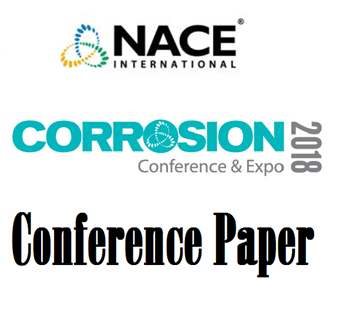Search
10150 Study on Corrosion Inhibition of Dissymmetric Bis-Quaternary Ammonium with Imidazoline Ring
Also Purchased
51316-7406-Modeling of Corrosion Mechanisms in the Presence of Quaternary Ammonium Chloride and Imidazoline Corrosion Inhibitors
Product Number:
51316-7406-SG
ISBN:
7406 2016 CP
Publication Date:
2016
$20.00
Prediction and Assessment of Ammonium Bisulfide Corrosion Under Refinery Service Conditions - Part 3
Product Number:
51317--8929-SG
ISBN:
8929 2017 CP
Publication Date:
2017
$20.00
51318-11476-Critical Micelle Concentration and CO2 Corrosion Inhibition Efficiency of Quaternary Amines
Product Number:
51318-11476-SG
Publication Date:
2018
$20.00




